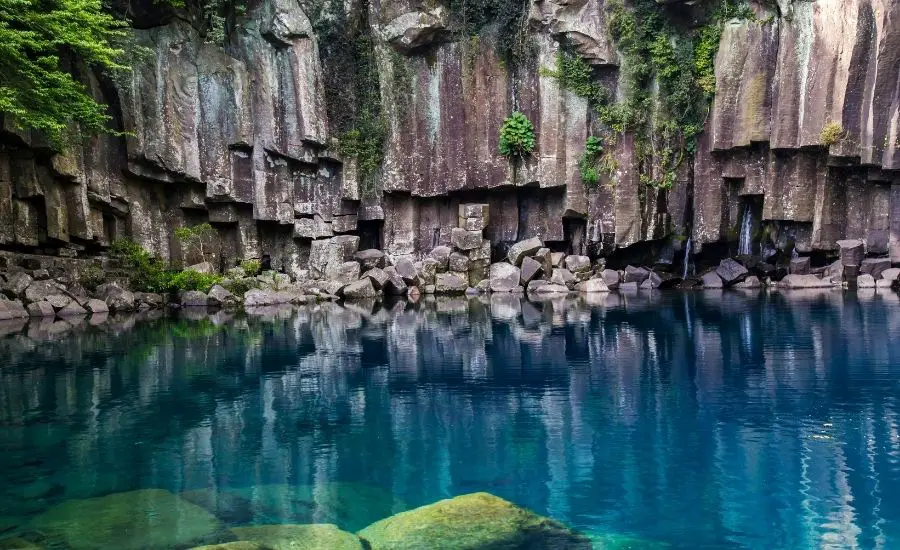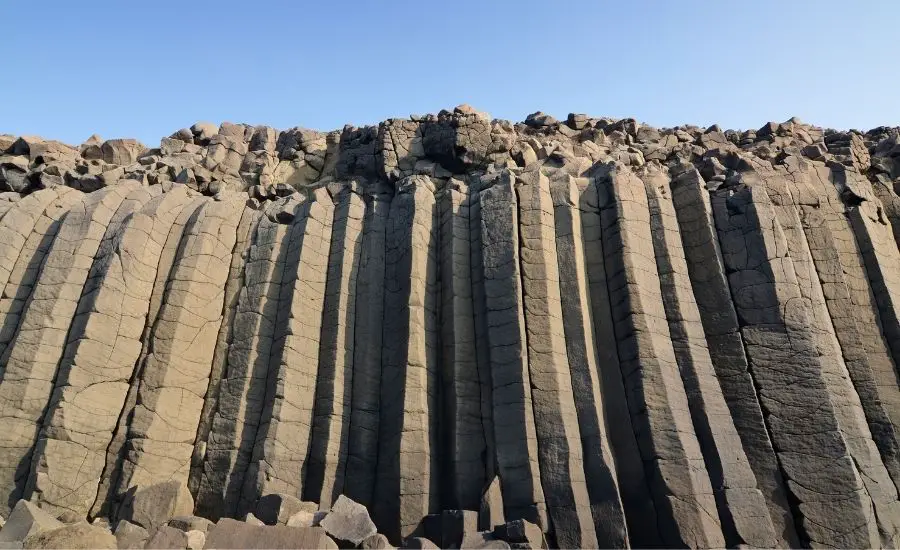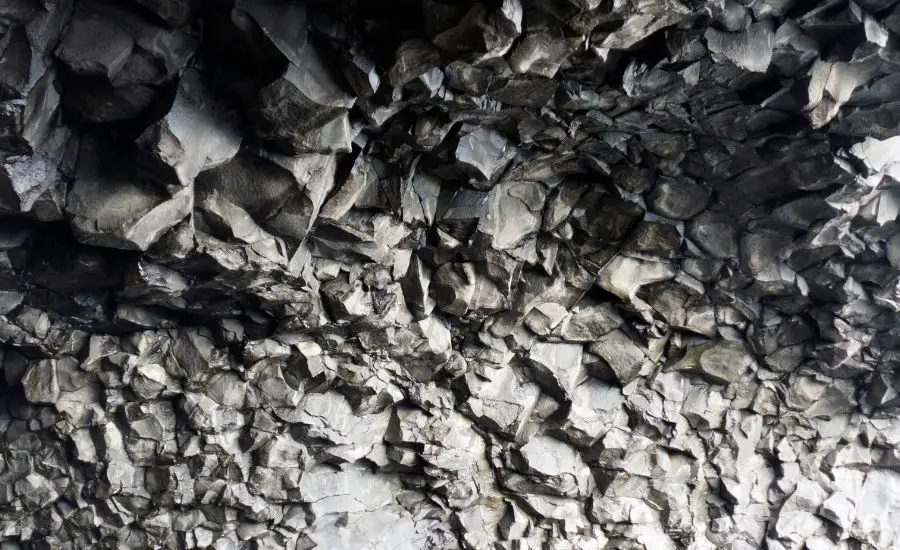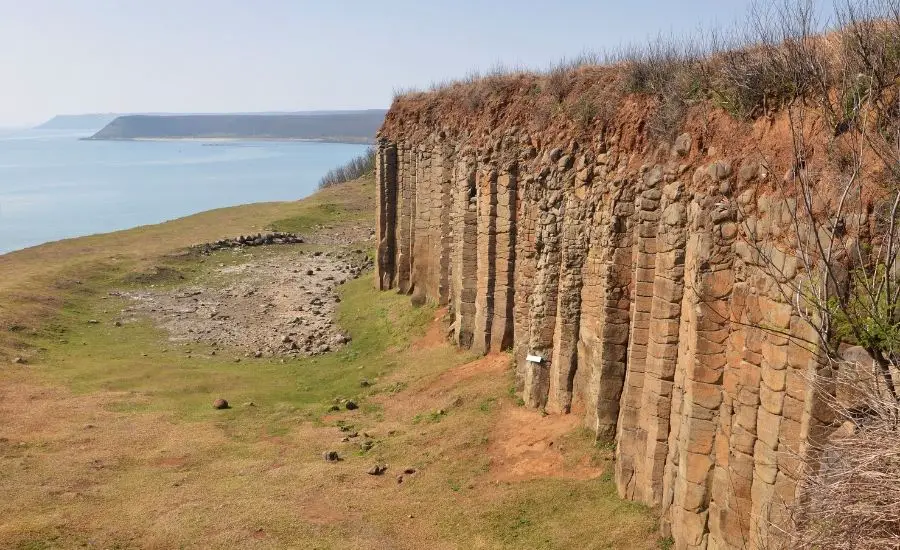Climbing on basalt seems to be a very unique experience. Basalt formations are some of the most enticing rock formations in the world. As a geologist and rock climber, I was curious to explore how basalt lends itself to rock climbing.
On average, fresh basalt is very good for rock climbing. Columnar basalt formations provide climbers with excellent cracks and corners while pillow basalt formations are great for slopers. If the basalt is too weathered, it will become soft and crumbly making it too dangerous to climb.
While fresh basalt provides rock climbers with some of the best rock climbing in the world, weathered basalt can be extremely dangerous. This article outlines what makes basalt so great for climbing and details some warning signs to look for on weathered basalt. In addition, a list of the best places in the world to climb basalt is given at the end!
If you are a big geology nerd like myself and want to learn more how all rock types affect climbing, I recommend checking out this book on Amazon!
How Good is Basalt For Rock Climbing

Basalt is an extrusive igneous rock of mafic composition. In non-geologist terms, basalt is a dark grey to black rock formed by volcanic magma that cooled quickly. This formation environment causes basalt to be compact and fine grained.
If you are a rock-nerd like myself and want to freshen up on your basalt knowledge or if you just simply want to know more about the science behind basalt, I recommend checking out this information on GeologyScience.com. (I use this website pretty frequently to double check and refresh my rock knowledge). If you are wondering if there is a best rock for climbing, check out my article here.
Small pockets are typically formed in basalt due to the presence of volcanic gas bubbles. While the majority of these pockets are not big enough to fit a finger in, they provide climbers with great friction. The bubbles that are big enough to fit a finger (or multiple) in are great for pockets. The shape of these can be similar to solution pockets in limestone (although the formation process is quite different)
It should be noted that some of the basalt formations can be slick if the grain is too fine or very abrasive on the hands if too many bubbles are present. That being said, the majority of basalt formations have a very friendly texture.
In addition to its climber-friendly texture, fresh basalt is typically very solid and compact. This allows climbers to place gear and be confident in the holds they are using. Be careful though because weathered basalt does not afford climbers this safety.
Typical Basalt Climbing Features
There are two very common basalt formations: pillow basalts and columnar basalts. Both of these are great rock climbing formations but will provide climbers with very different features to grab ahold of. This leads to two very different climbing styles.
Climbing Columnar Basalt Formations

As seen in the picture above, columnar basalts are a crack climbers dream. If crack climbing isn’t really your thing, they also make for great bridging routes. Either way, you cannot go wrong with sport climbing or top roping these majestic beauties. Truly no other rock formation in the world will provide you with this experience.
Columnar basalt formations result from the relatively fast cooling of thick mafic-rich lava flows in which a complex fracture network is formed. In general, the faster the lava flow cools, the smaller the columns.
Climbing Pillow Basalt Formations

As seen in the picture above, pillow basalts provide climbers with ample slopers to choose from. These make for fantastic bouldering problems and even sport climbs given the right scenarios. Just like the columnar basalt formations, these are unique and cannot be found in any other rock type.
Pillow basalts are typically formed by underwater mafic-rich lava flows. The water quickly cools the lava surface which in turn leads to a “pillow” structure. Eventually the lava breaks through this surface and is cooled again into another “pillow”. The width of these pillows can range from a couple centimeters to multiple meters.
The Effects of Weather Conditions and Weathering on Basalt Climbing
Weather conditions such as rain and snow have both short and long term effects on rocks.
How Weather Conditions Affect Climbing on Basalt
Basalt is a fine-grained rock and therefore will not absorb a large amount of water. In addition to this, basalt is an igneous rock which makes it relatively sturdy.
As a general rule, it is okay to climb on wet basalt after it rains as long as the basalt formation is in good condition and was previously climbable when dry. Due to its fine grained texture, basalt dries out very quickly and can be completely dried out within an hour of hot, dry and sunny conditions.

How Long Term Weathering Affects Climbing on Basalt
Basalt is known to weather relatively rapidly compared to other rocks. Due to it’s mafic composition, basalt is typically rich in iron. This high iron content makes basalt oxidize quickly in air and water.
When the iron rich minerals in basalt oxidize, they will stain the basalt a brown/red color. You can think of this as “rusting” although it is slightly different. Just like with rusted metal, oxidized basalt becomes brittle and fragile. This will cause the rock to break and crumble when climbed on. (Rhyolite and granite are also igneous rocks but their felsic composition helps to resist the effects of chemical weathering).
As you may have guessed, climbing and placing protection on weathered basalt is extremely dangerous. DO NOT DO THIS. Only climb on basalt that you know is fresh and solid. It is not worth taking the risk.
Best Places to Climb On Basalt

While basalt is one of (if not the most) common rocks on Earth, it is not the most common for rock climbing. A large amount of basalt is underwater and unable to be climbed. That being said, there are specific locations that have fantastic basalt outcrops great for climbing.
9 of the Best Places to Climb on Basalt
- Lower Gorge, Oregon
- Trout Creek, Oregon
- Frenchman Coulee (aka Vantage), Washington
- Aberdeen Columns, British Columbia
- Boquete, Panama
- The Grotto, California
- The Waterfall, Arizona
- Broughton Bluff, Oregon
- Table Mountain, Colorado
Every single one of these places will provide an awesome basalt climbing experience.
Disclaimer: Rock climbing is a dangerous sport which has the potential to result in serious injury or death. This article was written solely to provide information and insight pertaining to the relationship between geology and rock climbing. The information in this article is not to be relied on for guidance pertaining to the health and safety of any rock climbing activities.
